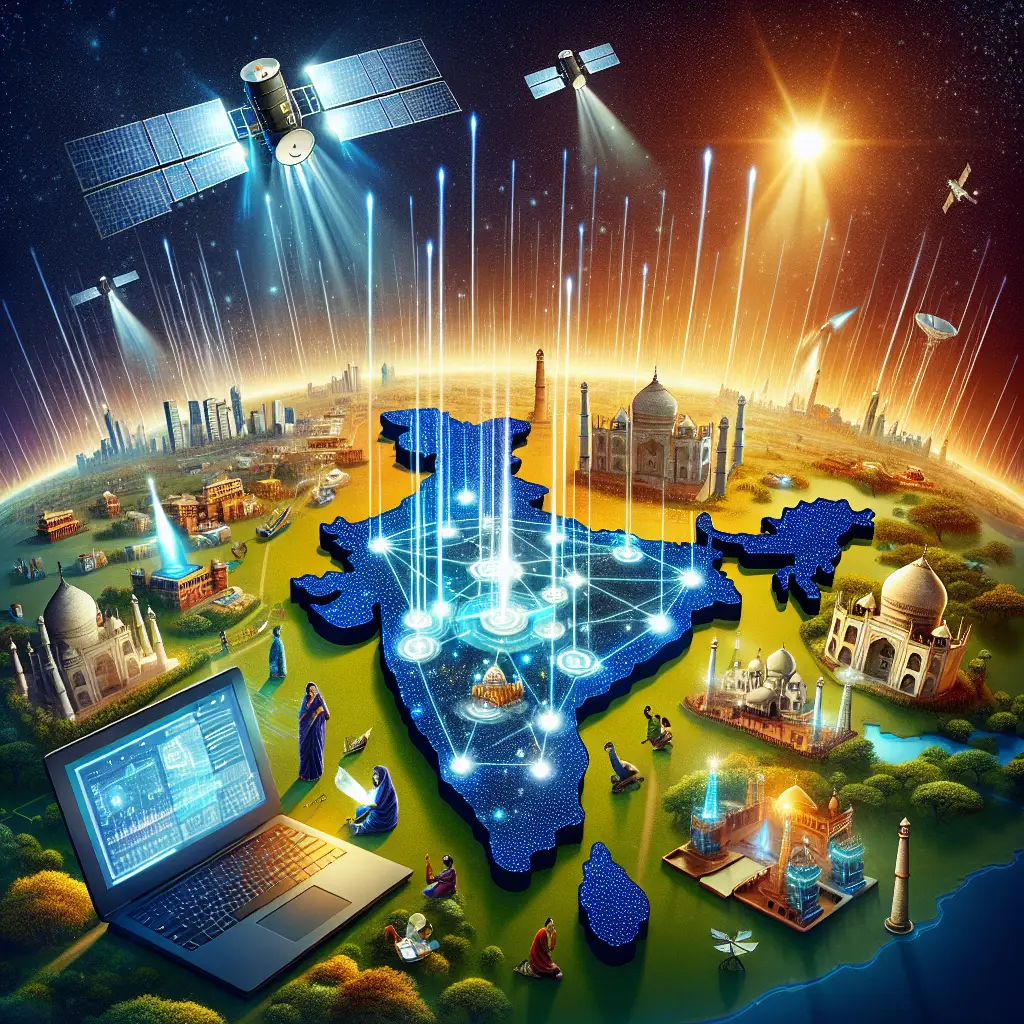Starlink Technology and its Advantages for India
In recent years, Starlink technology has emerged as a revolutionary leap in the way internet services are delivered, especially for regions lacking reliable terrestrial internet infrastructure. Launched by SpaceX, Starlink promises to bridge the connectivity divide that exists in various remote and underserved parts of the world. India, a country with a vast and diverse topography, stands to gain immensely from this technology.
Understanding Starlink Technology
Before diving into the advantages, it’s important to understand what Starlink is all about. At its core, Starlink is a satellite internet constellation being constructed by SpaceX to provide satellite Internet connectivity to underserved areas of the planet, and notably, to improve existing services in several regions.
How Starlink Works
- Starlink uses a constellation of low Earth orbit (LEO) satellites to provide high-speed internet across the globe.
- The satellites communicate with user terminals on the ground, which are effectively small dishes.
- Through a phased array design, these terminals can connect to several satellites simultaneously, ensuring a more stable and speedy connection.
- This setup minimizes latency issues, making Starlink faster compared to traditional satellite internet services.
Why India Needs Starlink
India, with its vast rural expanses, diverse geography, and rapidly growing population, poses unique challenges for internet connectivity. Despite strides in digital infrastructure, significant portions of the population remain without reliable internet access, especially in rural and remote areas.
The Current State of Internet Connectivity in India
- About 70% of India’s population resides in rural areas where traditional internet infrastructure is often lacking or unreliable.
- Geographical challenges including mountainous regions, dense forests, and expansive deserts make infrastructure development expensive and complex.
- Many of the existing service providers struggle to offer high-speed internet evenly across these regions.
The Advantages of Starlink for India
1. Enhanced Connectivity in Remote Areas
One of Starlink’s standout promises for India is its capacity to provide high-speed internet to some of the country’s most remote regions. By deploying LEO satellites, Starlink can bypass the geographical challenges that have long hindered India’s digital expansion:
- Reaching Remote Villages: Starlink can potentially cater to remote villages in mountainous regions like the Himalayas, or isolated communities in the Northeast and the Andaman and Nicobar Islands.
- Improving Rural Healthcare and Education: By ensuring reliable connectivity, Starlink can significantly contribute to telemedicine and online education, making them accessible to previously unreached demographics.
2. Boosting Economic Growth
Reliable internet access has been a significant driver of economic growth, enabling digital businesses, increasing market access, and fostering innovation. In the context of India:
- Rural Businesses: Small and medium-sized enterprises in rural areas can effectively tap into broader markets once they gain access to reliable internet.
- Digital Literacy: With increased digital literacy, more jobs can move to online platforms, allowing rural populations to participate in new economy jobs.
3. Supporting Government Initiatives
India’s government has launched numerous initiatives aimed at digitizing the country and improving connectivity, such as Digital India. Starlink aligns well with these goals:
- Complements initiatives like BharatNet, which aims to connect all of India’s villages with broadband.
- Facilitates better e-governance services, ensuring citizens in remote areas can access services online rather than enduring long trips to major cities.
4. Adapting to Modern Needs
As lifestyles change and digital becomes the new norm, the need for reliable high-speed internet becomes more pressing, especially for unforeseen circumstances:
- Work from Anywhere: In the wake of the COVID-19 pandemic, remote working has become more prominent. Starlink can support the decentralization of work hubs, potentially revitalizing rural economies.
- Disaster Management: Starlink can offer reliable communication channels during natural disasters, where terrestrial networks often fail.
Challenges and Considerations
While the potential advantages of Starlink in India are incredibly promising, several challenges and considerations need to be addressed:
- Cost of Access: The initial cost of Starlink equipment, including the user terminal, might be prohibitive for low-income rural families.
- Regulatory Approval: Securing permits and approvals from the Indian government can be complex, involving dealing with multiple authorities and regulations.
- Environmental Concerns: There are ongoing global discussions about the environmental and astronomical impact of deploying tens of thousands of satellites in low Earth orbit.
Conclusion
Starlink has the potential to transform internet connectivity in India, offering solutions to many long-standing challenges. By enabling reliable internet access, it could drive rural growth, support government projects, and form the backbone of a more digitally inclusive future. However, the path to implementation must carefully address potential challenges, ensuring that this technology benefits every layer of India’s complex socioeconomic fabric.
Disclaimer:This article is not promotion of any company and is just a useful info










